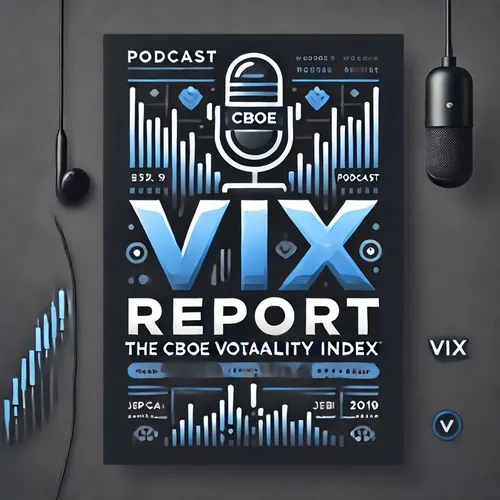"Volatility Drops: VIX Index Slides to 16.77, Signaling Calmer Market Sentiment"
- Author
- QP-1
- Published
- Tue 10 Jun 2025
- Episode Link
- https://www.spreaker.com/episode/volatility-drops-vix-index-slides-to-16-77-signaling-calmer-market-sentiment--66490033
The Cboe Volatility Index (VIX), often referred to as the "fear gauge" of the stock market, has experienced notable movement in recent days. As of June 9, 2025, the VIX closed at 16.77, marking a significant decrease from its value just a day prior. On June 8, the index had closed at 17.63, reflecting a decline of approximately 4.93% over just 24 hours.
The VIX Index measures market expectations of near-term volatility and is derived from the prices of S&P 500 Index options. When the index decreases, it generally indicates a market sentiment of reduced fear or anticipation of lower volatility. This recent downward trend suggests a shift towards a calmer market environment, as investors appear more confident about near-term stability in the U.S. equity market.
Several factors could be contributing to this observed decrease in the VIX. Firstly, periods of market stability or a sustained rally in equity prices typically lead to lower volatility expectations. Investors may be gearing towards positive economic developments or improvements in geopolitical landscapes which are likely diminishing anxieties over market fluctuations. Additionally, robust economic indicators—such as strong employment figures, GDP growth, or corporate profits—can foster a sense of stability among investors, further contributing to the reduction of the VIX.
Investor sentiment also plays a crucial role. A broader sense of optimism and confidence in market conditions might be reducing the overall fear, driving the VIX downwards. Whether prompted by corporate earnings reports, fiscal policies, or global economic factors, this sentiment is pivotal in shaping expectations of future market movements.
However, it's essential to acknowledge that the VIX has not been in a steady decline over the recent period. A fluctuation was seen on June 5, 2025, when the VIX closed at 18.48. This indicates that while the trend is currently pointing toward lower volatility, the index has experienced variability, aligning with the dynamic nature of the equity markets and investor responses to new information.
It's important to track these changes as they provide valuable insights into market psychology and potential future swings in equities. While the recent decrease in the VIX signals expectations of short-term steadiness, investors and analysts remain watchful for conditions that could shift this outlook, such as unexpected geopolitical developments, corporate earnings surprises, or shifts in monetary policy.
In conclusion, the VIX Index's current position at 16.77, as of June 9, 2025,
